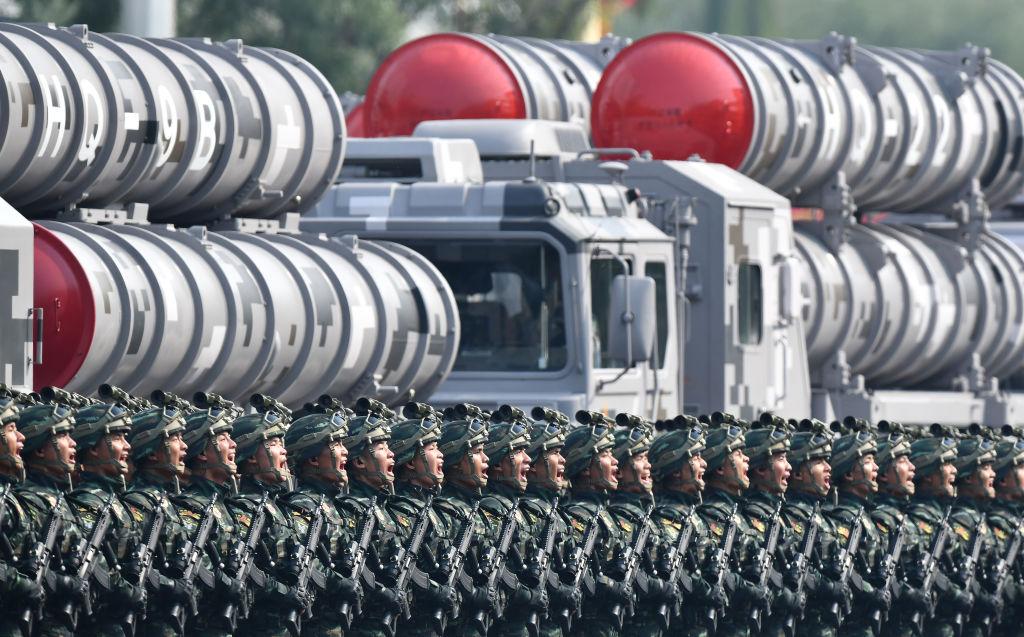
It’s technical, it’s growing and it’s secretive. Unlike the People’s Liberation Army air force and navy, which frequently feature in Chinese state media headlines, comparatively little attention is paid to the fifth branch of China’s military—the Strategic Support Force. But the SSF is incredibly important. If the Chinese Communist Party’s Central Military Commission is the brain and the major military branches the arms and legs, then the SSF is both a striking arm and the nervous system that connects it all.
Yet, while Chinese President Xi Jinping boasts of the PLA ground force’s historic power and highlights its rocket force as the core of China’s great-power status, he says little about the SSF beyond that it’s ‘an important improvement in force integration and military–civil fusion in the PLA’s novel ways of war’. So, what exactly is the SSF?
As early as 2013, the PLA has sought to transition from being a primarily land-based force to a global power in what it deems the ‘strategic frontiers’ (战略边疆) of space, cyberspace and the sea. Stronger emphasis on information warfare (信息化战争) and joint operations (联合作战) has been the heart of a major reorganisation and modernisation of the PLA since 2013 that included the creation of the SSF three years later. The PLA says the SSF was built with ‘brick, not clay’—assembled from cyber, space, electronic warfare and other strategic support units previously scattered across the military.
Although independent, the SSF works with the rest of the PLA to provide accurate, high-quality and reliable intelligence support to bring the entire military under an ‘information umbrella’ (信息伞). Two departments make up the SSF: a space systems department (航天系统部) and a network systems department (网络系统部). Each is commanded by deputy-theatre-grade (副战区及) lieutenant generals, indicating that they may enjoy more autonomy than the departments in the PLA’s other four branches, which are usually headed by major generals.
Aiming to achieve cyber, electronic and psychological superiority over an enemy, the SSF is designed to deliver blows of its own. Chinese state news sources claim the focus of capabilities within the SSF make it more effective than the US military system where each branch has separate strategic support units that compete for resources.
As one of the newest branches of the PLA, it is not surprising that the SSF is growing in influence and size. In 2019, the SSF debuted in the Chinese Communist Party’s 70th National Day Parade. It also inherited Base 311 (三一一基地), the site of the PLA’s ‘triple warfare’ (三战) innovation and training centre, which supports public opinion warfare, psychological warfare and legal warfare (舆论战、心理战、法律战).
Information on the units commanded by the SSF is scarce and frequently redacted from accessible sources, but we can be relatively certain that it’s rapidly growing, mostly through military–civil fusion.
While a branch of the PLA, the SSF has extensive ties to civilian expertise and the party leadership, but it also draws heavily on the civilian sector for talent and technology. It recruits from top Chinese universities for technical experts in information technology, engineering and computer science, and in 2018 it signed a strategic cooperation agreement with the China Railway Engineering Corporation, the China Railway Construction Corporation, the China Communications Construction Group and the Power Construction Corporation of China (PowerChina).
These connections are to allow these central enterprises to rapidly integrate their key projects with SSF operations. PowerChina plays a large role in Belt and Road Initiative projects throughout Asia, and its overseas brands include Sinohydro, HydroChina and SEPCO Electric Power Construction Corporation.
However, the SSF’s reliance on civilian industries comes with risk. It’s no secret that China faces a severe deficit of cyber professionals—to the tune of 1.4 million personnel. That skills shortage, combined with China’s struggle to replace foreign technology with domestic alternatives, will severely hinder the PLA’s cyber capability. Exactly how that will affect the SSF and the PLA over time remains unclear.
For the rest of the world, but especially democracies in the Indo-Pacific, the rise of the SSF should spur action. It’s apparent to both sides of the Pacific that the branch is destined to play a pivotal role in the wars of tomorrow, and the PLA certainly hopes that the ostensibly better efficiency of the SSF could give it an asymmetric advantage over the US. Ultimately, however, a branch that consolidates a whole military’s strategic support is an untested novelty in modern military strategy. There’s plenty of room for weaknesses and vulnerabilities, especially given its dependence on civilian industries.
But as the PLA prepares itself for joint operations information warfare, it’s time to get behind the SSF’s thick shroud of secrecy and examine how effective this neural network of the PLA war machine might be. Concerned parties cannot afford a false sense of security when it comes to the SSF—it’s integral to the PLA. The SSF remains extremely under-researched, with frustratingly little written on its details and intricacies, and there’s rich potential for future investigation of its strengths and weaknesses. Building a clearer view of the SSF itself could also reveal how the world’s largest military will react in a future conflict.